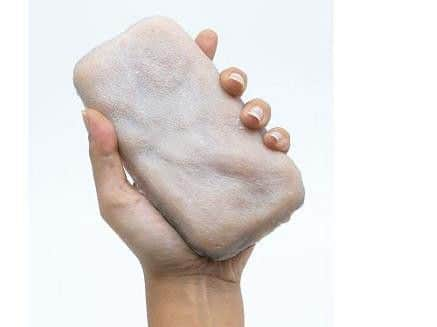UK scientists develop artificial human-like skin lets users caress and tickle their phone
The prototype, which has been designed to look like and mimic human skin, responds to different forms of human contact such as tickling, caressing and pinching.
Called Skin-On interface, it can be attached to mobile phones, wearable devices and laptop touchpads.
Advertisement
Hide AdAdvertisement
Hide AdThe technology was developed by researchers at the University of Bristol in partnership with Telecomm ParisTech and Sorbonne University in Paris.


The team says its work opens the door for a possible future with “anthropomorphic devices”, where digital devices have human characteristics.
Dr Anne Roudaut, associate professor at the University of Bristol, said: “It may look unconventional probably because we are used to our senseless and rigid casings, but we feel there are strong advantages of using more malleable technologies.
“And the familiarity of the skin provides a more natural interface for end-users.”
The researchers said their artificial skin allows devices to “feel the user’s grasp” and has the ability “to detect interactions such as tickling, caressing, even twisting and pinching”.
While the idea of artificial skin has been explored in robotics as scientists try to develop robots that look and act like humans, the researchers said they were more interested in working with everyday devices.
Dr Roudaut added: “We have seen many works trying to augment human with parts of machines. Here we look at the other way round and try to make the devices we use every day more like us, i.e., human-like.”
Creation
The artificial skin was created using two layers of silicone – called “dermis” and “hypodermis” layers – with an electrode layer in the middle made up of ultra-thin wires that act as sensors.
Advertisement
Hide AdAdvertisement
Hide AdTwo different types of silicone were dipped in pigment and moulded to give the creation a skin-like texture.
Marc Teyssier, a PhD student at Telecomm ParisTech and the lead study author, said: “The prototypes we developed propose a possible future
with anthropomorphic devices.”